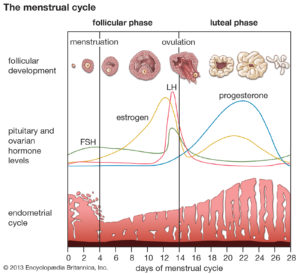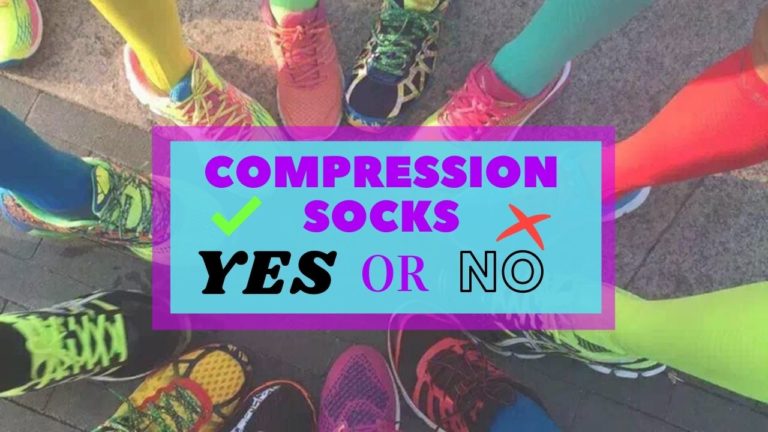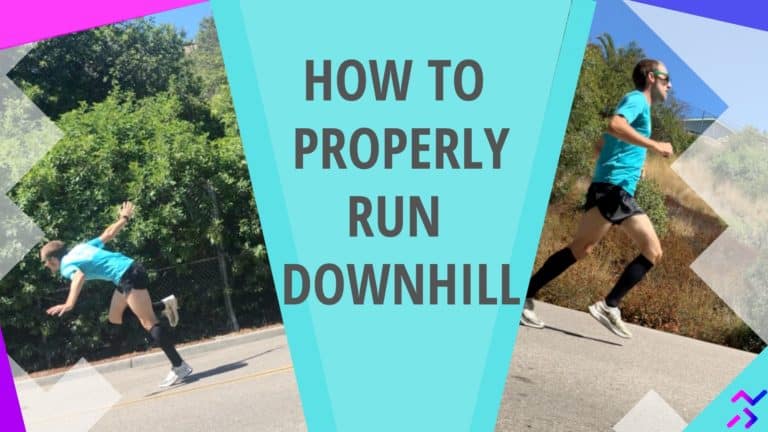We, for some reason, avoid talking about periods: it’s bloody, it’s painful, and we, as females, were taught not to talk about our vaginas in public.
*Gasp* How inappropriate!
Regardless of how much or little you like to talk about periods, it’s a fact that half of the world population experiences them at one point in their life. But did you also know these cycles dictate how females should train, eat, and hydrate?
So get comfortable talking about periods. This will not be the last time they are mentioned on this here blog.
Before we get into how periods affect your training, let’s go back to high school health class for a sec.
Let’s Talk Periods

This diagram may look intimidating, but let’s try to simplify it.
As Dr. Stacy T. Sims mentions in her book, your cycle can be broken up into the “low hormone phase” and the “high hormone phase”. These are centered around two important female hormones: estrogen and progesterone
Low Hormone Phase
This starts on the first day of your period (day 1). The blood you see? That’s the lining of your uterus. During this time, estrogen and progesterone are low. During the next week or two, estrogen increases. Around days 11-14, estrogen spikes and an egg is released from its sack (follicle). This is known as ovulation. After this phase, we move into the high hormone phase.
High Hormone Phase
The now empty follicle starts producing progesterone. Estrogen drops initially, but builds again in the middle of the cycle (around day 20). These hormones work together to prepare your body for a possible pregnancy: your body temperature increases and the uterine lining rebuilds. If pregnancy does not occur, progesterone and estrogen both drop (around day 28) and your uterine lining starts to shed (day 1). This starts the whole process over again.
Birth Control: Controlling your Menstrual Cycle
There are many reasons for females to take birth control: prevent pregnancy, manage painful cramps or cysts, reduce your risk for certain cancers, and decrease cystic acne. There are also many forms of birth control now available. The most common form is oral contraceptives, but there are also patches, rings, shots, implants, and intrauterine devices (IUD). We’ll go into more detail about oral contraceptives and the IUD.
The Pill
“The Pill” helps regulate your period by supplying you with a normal dose of estrogen and progesterone. This prevents you from ovulating and stops the thickening of your uterine lining. It also forces you to have a regular 28-day cycle and decreases your normal hormonal fluctuations. In fact, your hormone cycle is more just a constant state of “medium-high hormones” until your period. This form of birth control also reduces your body’s natural production of estrogen and progesterone.
IUDs
Intrauterine devices (IUDs) are, as the name suggests, a form of birth control that is placed into your uterus. There are two types of IUDs: non-hormonal and hormonal.The non-hormonal IUD is made of copper. This physical barrier acts as a spermicide (sperm killer) to prevent pregnancy. The hormonal IUD produces progestin (like progesterone). It works by thinning your uterine lining. With a thinner uterine lining, you may experience lighter periods or just stop bleeding all together. Unlike The Pill, these forms of birth control do not fully stop ovulation and they do not affect your body’s production of hormones. You will experience the normal hormonal fluctuations of your menstrual cycle.
**I am not a doctor, so I will not give you medical advice. If you are interested in birth control, ask your doctor and figure out which one is best for you.
A Word of Caution
As a female athlete myself, I have found the presence of my period to be annoying. Who wants to deal with bloating, cramping, and that bloody mess during competitions or training?
It can certainly be inconvenient. But losing it (when you are not pregnant) can have detrimental effects on your overall health.
High intensity training without proper fueling can lead to decreased body fat and, in extreme cases, a lost period. This is a sign that your body has lost its ability to make estrogen. Estrogen plays an important role in bone formation. A loss of estrogen for long periods of time can decrease your bone density, making you prone to injuries and stress fractures. To learn more about exercise effects while on your period, check out one of our other posts here. If you lose your period at any point throughout your fitness journey, please talk to a medical professional.
Next Steps
So, now you know about your menstrual cycle. It’s more than just that week of pesky bleeding and annoying cramps. Now what? In the next post, we will talk about how your hormonal fluctuations affect your training….and what you can do about it.



